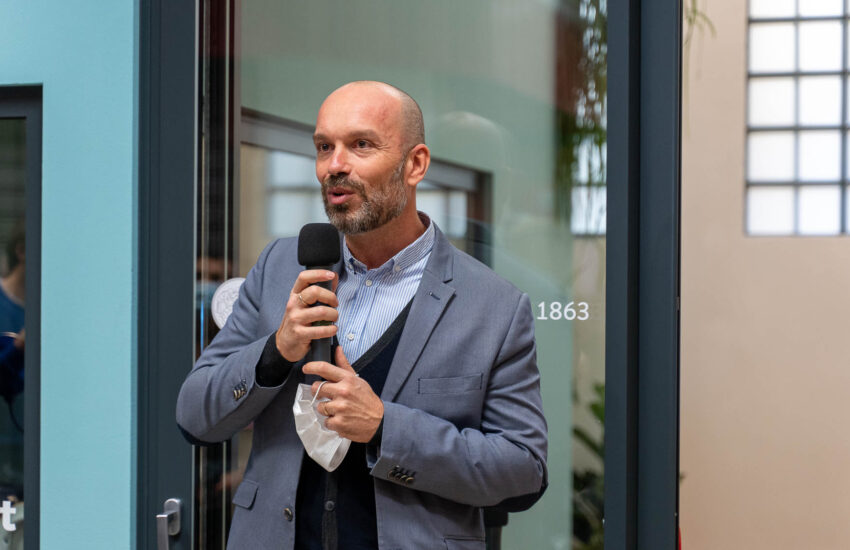Davide Fassi, by vocation, and for work, lives among the people, the common one. He is professor of Design Methods at the Department of Design of the Politecnico and he is member of the DESIS Network (Design for Social innovation and Sustainaibility). Patience and empathy are among his “tools of the trade”, but behind them there is a lot of study, competence and enthusiasm. We met him at Off Campus Nolo, where he told us about his journey.
You started out as an architect, then passed from interior design to service design. In what way did you interests evolve in this direction?
Yes, I effectively trained as an architect. When I began teaching at the Politecnico I began in interior design, focusing more than anything else on spaces.
Everyone thinks that when we talk about interiors we only mean confined spaces. But in fact we have always dealt with space in the general sense, including public space, spaces in the city, in the neighbourhood context, outdoor spaces.
I inevitably came into contact with the activities and services of these places: following an architectural line that focuses first and foremost on the interior and then on the exterior, I began to think about and understand how to make people interact with places. And so design and plan the experiences that people have in them.
And in addition, at the time, the range of courses on offer was different. There was only design, a field of studies which, in subsequent years, became even more segmented: interiors, services, products.
What do you deal with specifically?
My area is design for social innovation. I coordinate a research team called Polimi DESIS Lab (Design for Social Innovation Sustainability), a group of about twenty people committed to innovating society through design, research and teaching, with people and for people. Over the years I’ve changed the way of thinking and operating, trying to engage the end user to take part in the design process.
Just how important is the innovative approach in this field?
As researchers and as a Politecnico, innovation is key. The purpose of research is to identify and prototype innovations that can then be implemented in real life.
Research serves to foster innovation – innovation of the technological and social kinds, of materials and processes and also working with the communities, and studying the dimensions of the neighbourhood. Today, we are here in this place, we have prototyped this space because practically speaking we have recovered a place that had been abandoned for twenty years. A model that we hope will rub off on all the rest. Until you show how something new might be, it is difficult to picture it. This is true about space, but also for the activities you do with people.
Absolutely. And which transversal skills are needed to work, to perform research for the social field?
First of all, empathy, because if you don’t have an empathetic relationship with people, it is extremely difficult to generate credibility.
Then, you need patience: to work in social contexts, community environments, places that host people with common interests – whether a neighbourhood or a park – you need to tread carefully at the beginning. Working with design and social innovation means taking into account that you need to follow a pathway in which you listen, make yourself known, understand, make suggestions, maybe even fail, and start again. It takes time, otherwise you risk barging in like an elephant especially when you have a fancy name like that of the Politecnico, in contexts that are micro-local. Sometimes people wonder what “these people from the Politecnico” could possibly want in such a small area? When they realise that the skills we bring, i.e. our design, architecture and engineering expertise, can be put to good use for the benefit of the neighbourhood, then you begin building a relationship.
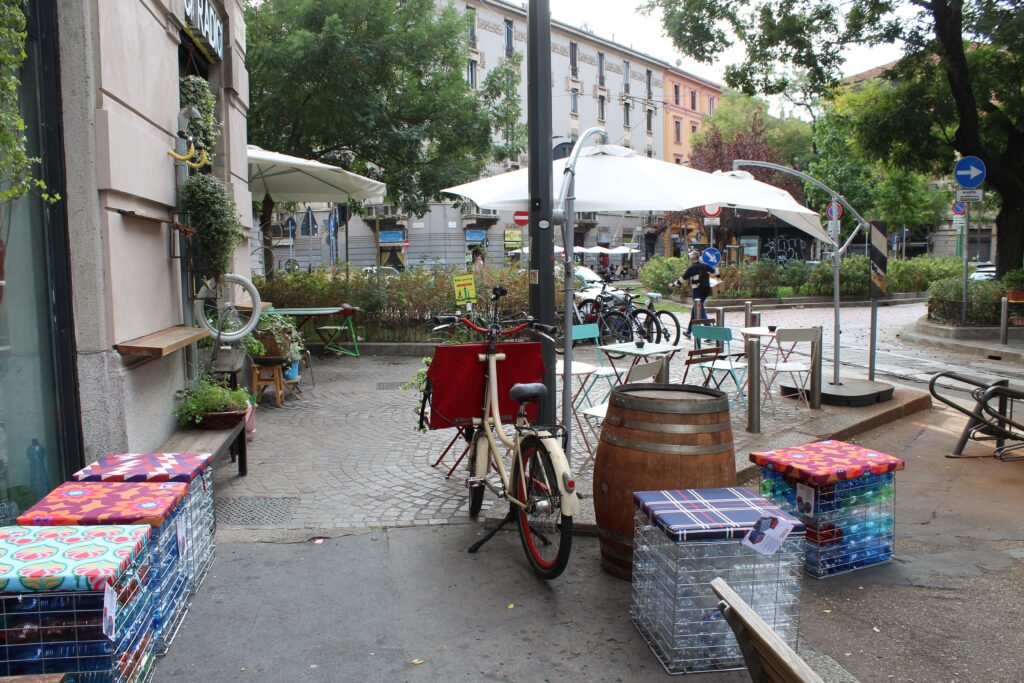
What else is needed, in addition to empathy and patience?
You also need the ability to envision. That is, to create unconventional visions, scenarios and solutions for the places people live in on a daily basis. This means that you also need to go beyond the smaller things, like litter bins, and think about the design of the space.
You have also had international experiences. How much of an impact has the possibility to compare your own experiences withthose elsewhere had on your training as a researcher?
A huge impact. The good thing is that, although you work in very local contexts, the value you bring with you comes from an international panorama. And so I take all the competences I have accrued abroad with me to the neighbourhood.
Can you tell us about some of these places?
I stayed in China for three years as a visiting professor in Shanghai, where an engagement project was being launched in the neighbourhood around the campus. That was a great training ground for me, because with a considerable language barrier (I didn’t speak Chinese, only English), and a totally different context and dynamics, I acquired the procedures implemented by the local professors and researchers, trying to understand which ones could also be implemented in other contexts like this one.
In turn, I also applied some of my own experience to the benefit of the situation. For example, all the experience that we have gained with “Coltivando”, the community garden that we set up in Bovisa, was useful in Shanghai, because we re-proposed it with the involvement of the community to make vegetable gardens there too.
So you took something of those places with you? Tell us about some of the best ideas and inspirationsyou found abroad.
I got a lot out of working in a context like China where the resources allocated to research are valuable, economically speaking, both the public ones, thanks to the GDP, and those of the private partners. And that’s not all. I discovered that social innovation can be accompanied by technological innovation.
At Tongji University they had opened the FabLab, a laboratory that looked onto the street, enabling passers-by to observe very advanced technologies, from 3D printing, to artificial intelligence, to laser cutting. The people passing by saw things they weren’t used to seeing. So, innovation but not just related to design.
On that subject: what’s next? What are the next research projects you want to take on?
We participated in a call for proposals by Creative Europe last year, with a project called Human Cities – Creative works with small and remote places.
The project aims to bring the competences of design to small, remote places they do not usually reach, with the involvement of ten European partners (universities, designer associations, startups). Each one of these is a hub of creativity that adopts a small, remote territory in its own country and tries to implement a design process, find solutions and leave a legacy on the territory, with the involvement of the local people. This is because, over the years, we have realised that there are some contexts which are very well-researched, with many applied solutions, such as the city of Milan and its surroundings, or in general large cities that contain creativity skill centres. But on the other hand, there is also a whole series of situations scattered throughout the territory and not directly connected to the centres, which need a bit of a push, especially because they are usually the custodians of the knowledge and traditions of the local “know-how”, a heritage that is tending to disappear due to the population moving away and ageing. Unfortunately, the pandemic turned our plans upside down, but we’ll try to pick up the activities again on site.
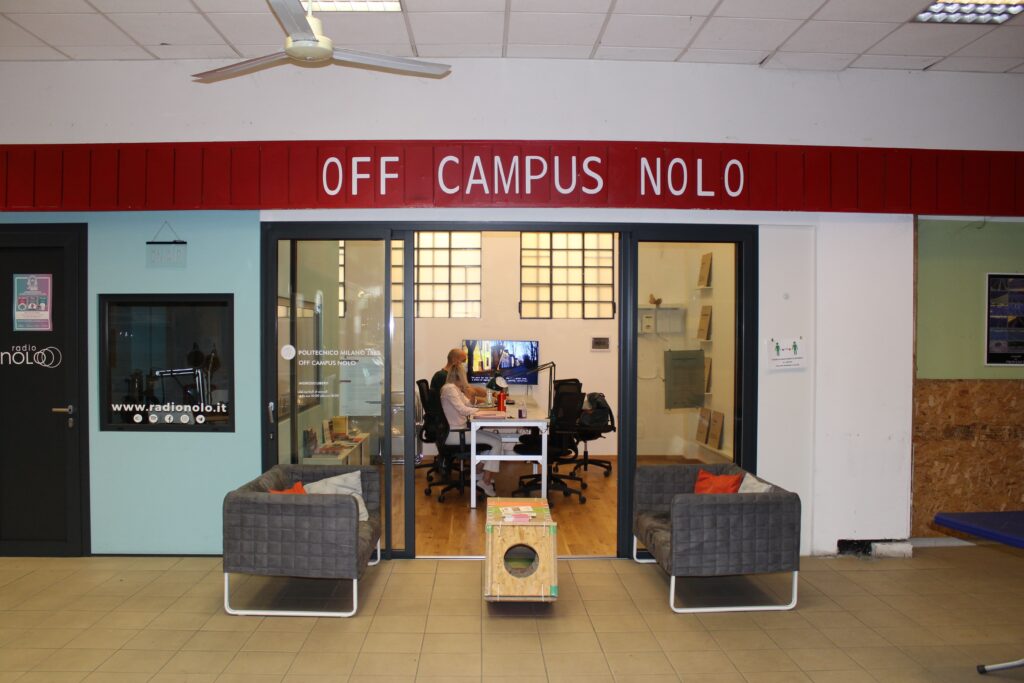
And then there’s Off Campus…
Exactly. One of these cases is the place we are standing in now, which passed the selection process for the PoliSocial Award on the theme of food waste.
In practical terms, we are trying to establish a network of neighbourhood shops to recover the surplus of fresh food that is about to expire, and put it back into the solidarity circuit. Once a week we host the “suspended shopping” initiative which, this summer, managed to collect twenty shoppngs worth thirty euro, each with fresh products from the market. This was possible thanks to the donations made by the locals on the platform of our partner Radio Nolo.
To this end, we helped create two shopkeepers’ associations, not to mention the activity of the local market held on Fridays with the Recup association, which aims precisely to reallocate any unsold fruit and vegetables, focusing on the concept of circular economy.
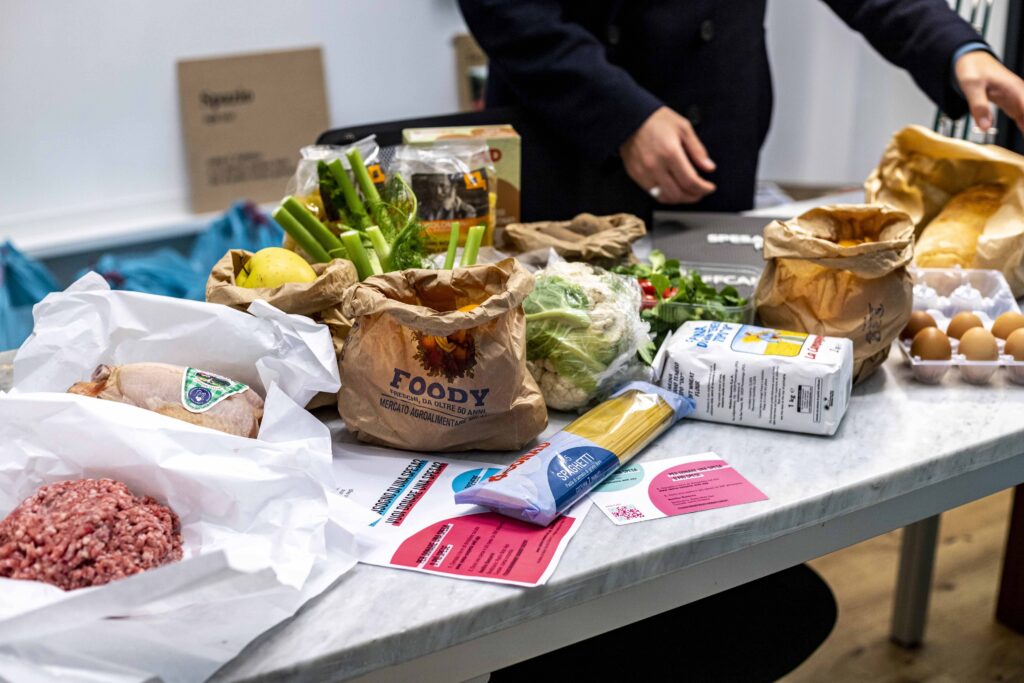
Let’s tell any aspiring designers out there how curious a researcher needs to be…
You need to be very curious, because if you don’t let yourself be stimulated by what happens outside, you won’t be able to innovate. This is why you must always be curious.
And that’s not all: you must also learn to look at things from another viewpoint, which is the hardest thing of all to do. Get yourself used to not only seeing reality the way it is, but trying to put yourself in someone else’s shoes. To do this you must also be very stimulated by the people around you, who come from the widest variety of social and cultural backgrounds: in our team of eight people, this is a real wealth.
Living life in the city to the full but sustainably is often a challenge. What advice can you give us?
I hope that there will be more and more participation in the public dimension, in taking care of the common good; with taking care also referring to designing our wellness. Instead, applied to daily life, it means not always turning away, for example, ignoring waste on the ground, but picking it up.
Of course the dustman or the institutions in general must do their duties, but we mustn’t delegate everything to other people: we too need to play our part.
In your work, you meet lots of ordinary people every day. Can you think of a certain person, or a specific episode that made a particularly strong impression on you?
One episode that was definitely interesting was the one that happened in Coltivando, the garden in Bovisa tended to by a group of twenty local residents. Initially, many of them were not only sceptical about the project, but had in fact actively criticised it, saying that wasn’t how things were done, and that, all in all, that we didn’t have a clue what we were doing. But then, gradually, many of these people began to cross the fence, passing from sterile criticism to active participation. One of them was Guarino, 86 years old. Now he goes there every day, from 7 o’clock in the morning! Previously, Guarino spent his days alone at home, with his sick wife or at the bar. The vegetable garden changed his life. So you see, for me innovating means also changing people’s lives with small things.
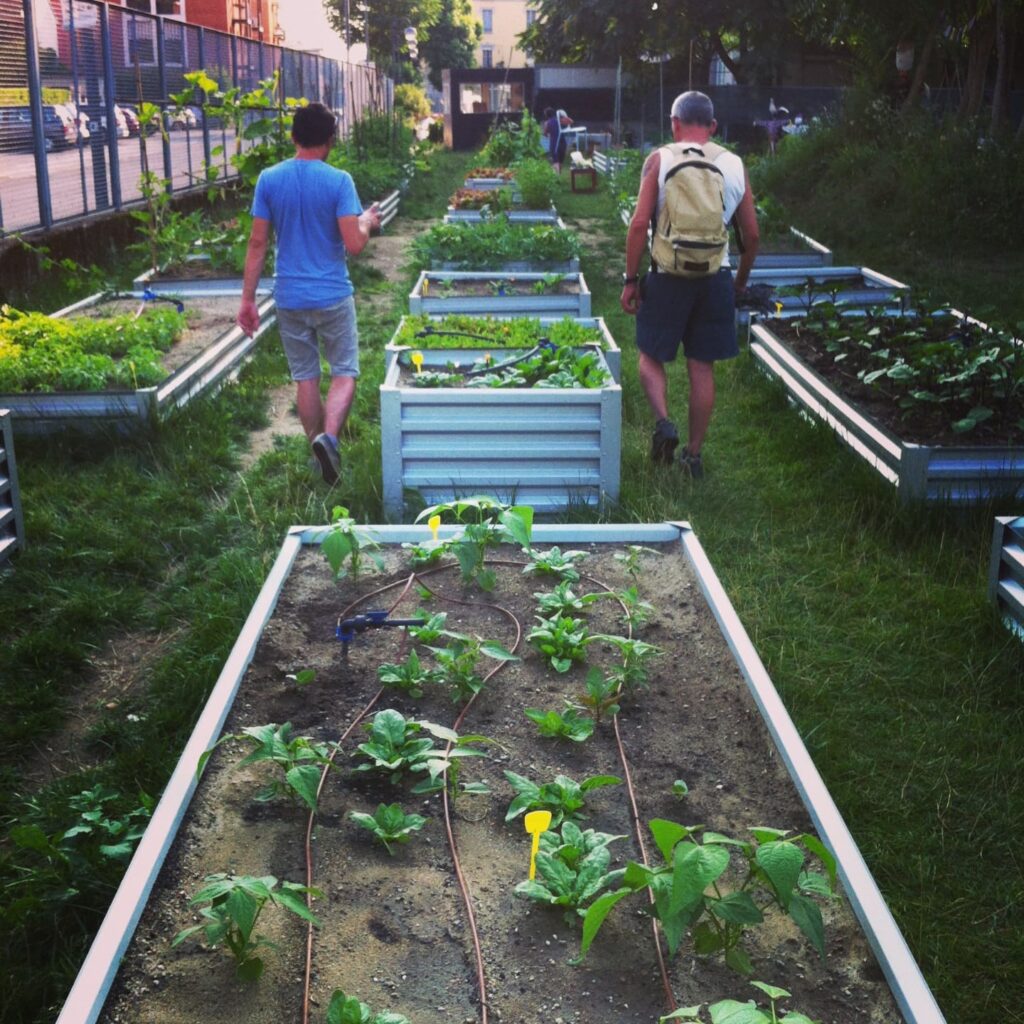
But what are the most common forms of resistance you’ve encountered?
Without a doubt, initially, change tends to create friction. If I think about what we’ve done in this neighbourhood, from experimenting with the cycle paths to supporting bars and restaurants in placing tables outside, we can say that we have returned many spaces to the local people.
Unfortunately, when you touch on themes such as traffic and parking, some people already start out with their guard up, because they might be used to parking under their own balcony, or doing everything they need to do by car, even though the neighbourhood offers bike sharing and no less than three underground stops.
When we carried out interventions in Rovereto, we found ourselves up against people protesting with megaphones, not to mention the arguments on the social networks. To this, we can add the fact that, as we were coming onto the scene as the Politecnico, there was the prejudice against “these teachers who think they know everything”. You can imagine what the difficulties were.
And how did you overcome them?
Firstly, we tried to keep a low profile, especially at the beginning, even when we were wondering what had possessed us to go there. We can only combat the prejudice against the academic world, if we can call it that, if we engage people more, and better communicate our research and what we do. This is why we are all for initiatives such as “Researchers’ Night” and a wider disclosure of what we do beyond the university environment, through tools like Frontiere.
Update. After the publication of the article, Davide Fassi informed us with great satisfaction that the Off Campus NoLo project has been included in the ADI DESIGN INDEX 2021, the selection of the best Italian design made every year by the ADI Permanent Design Observatory, which completes the preselection for the next Compasso d’Oro. Well done!

